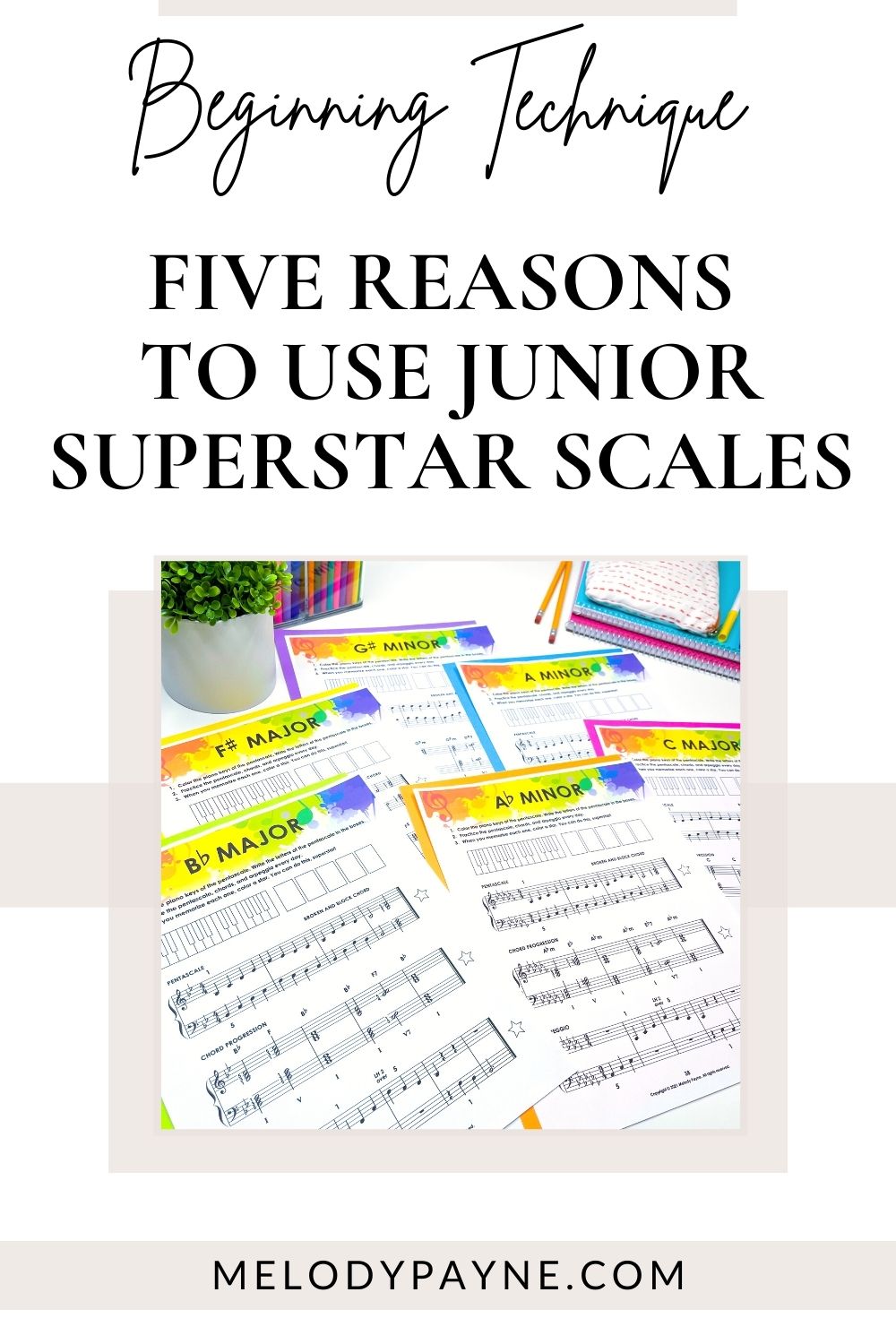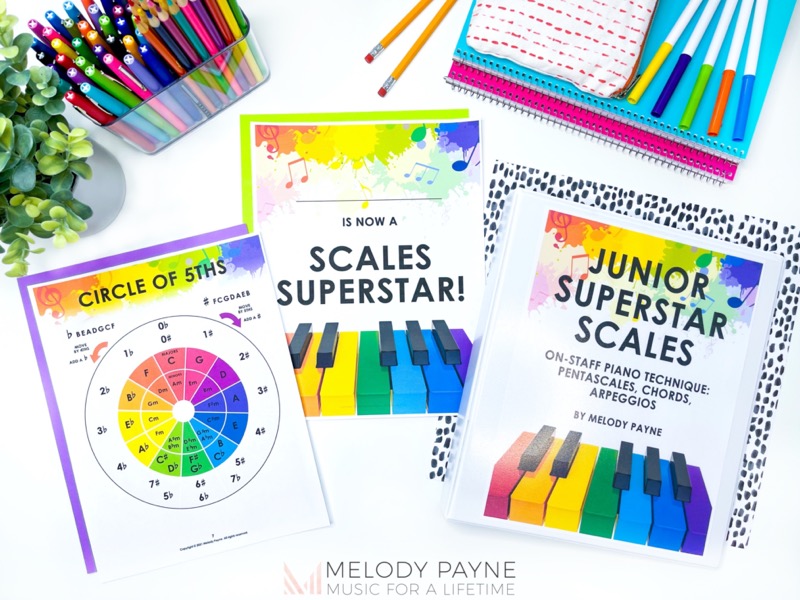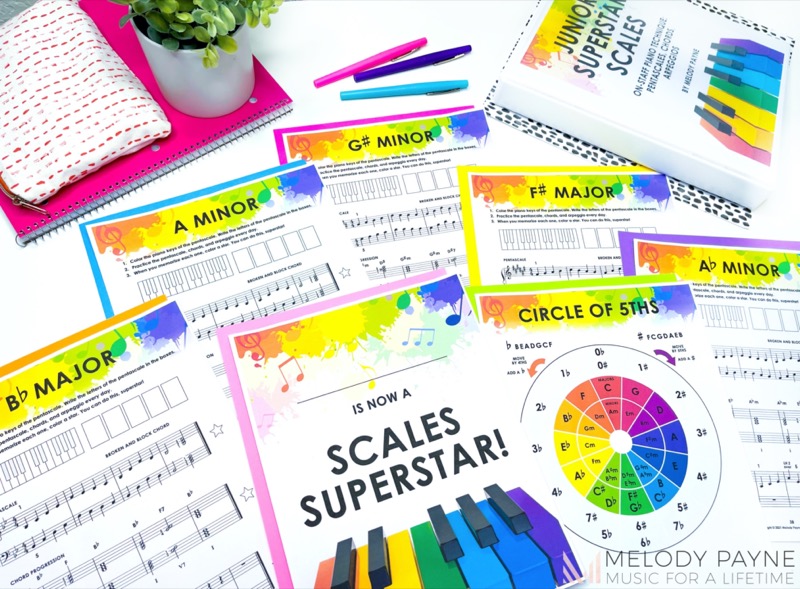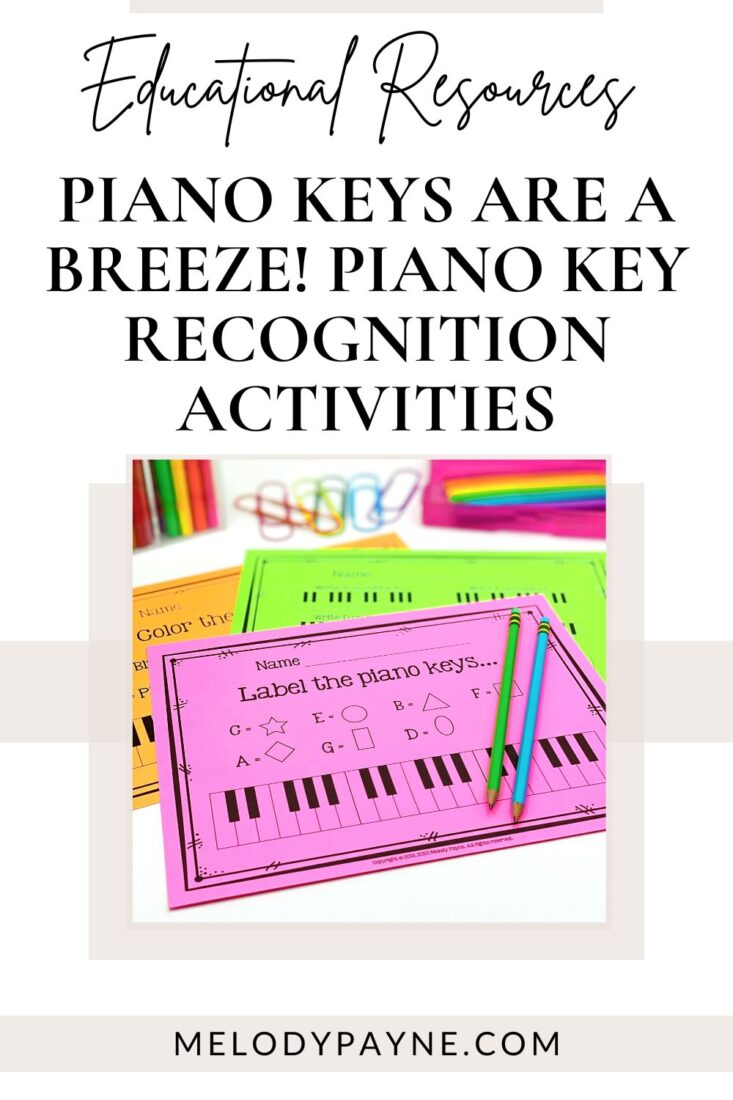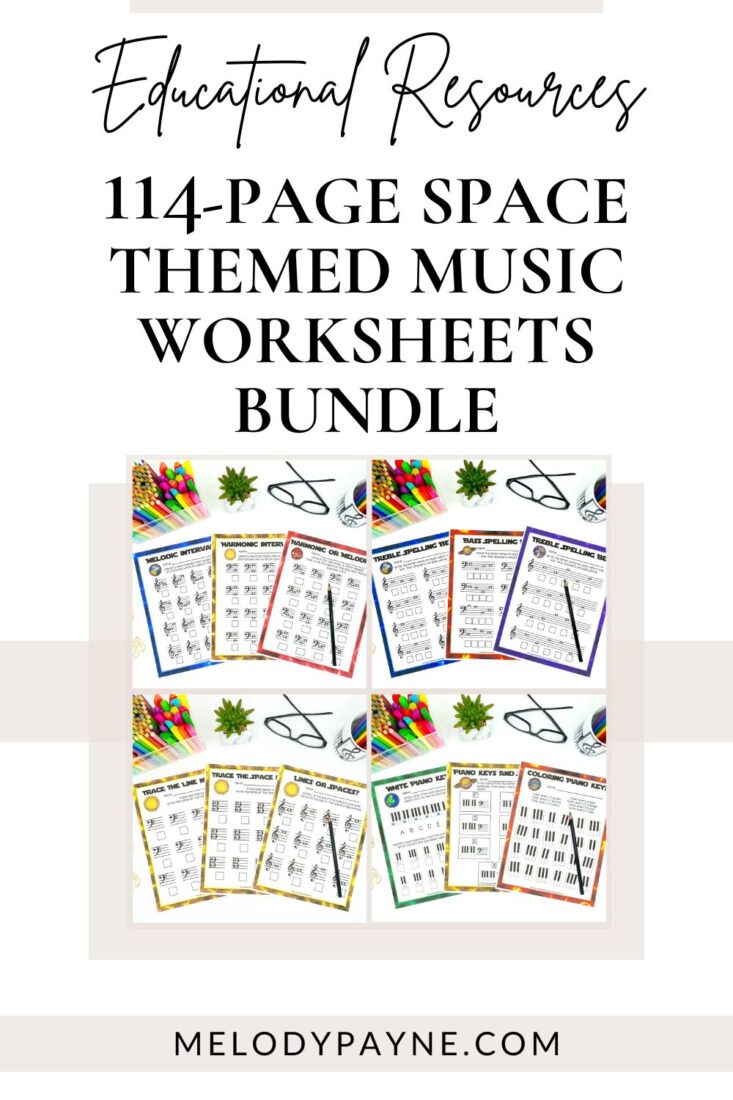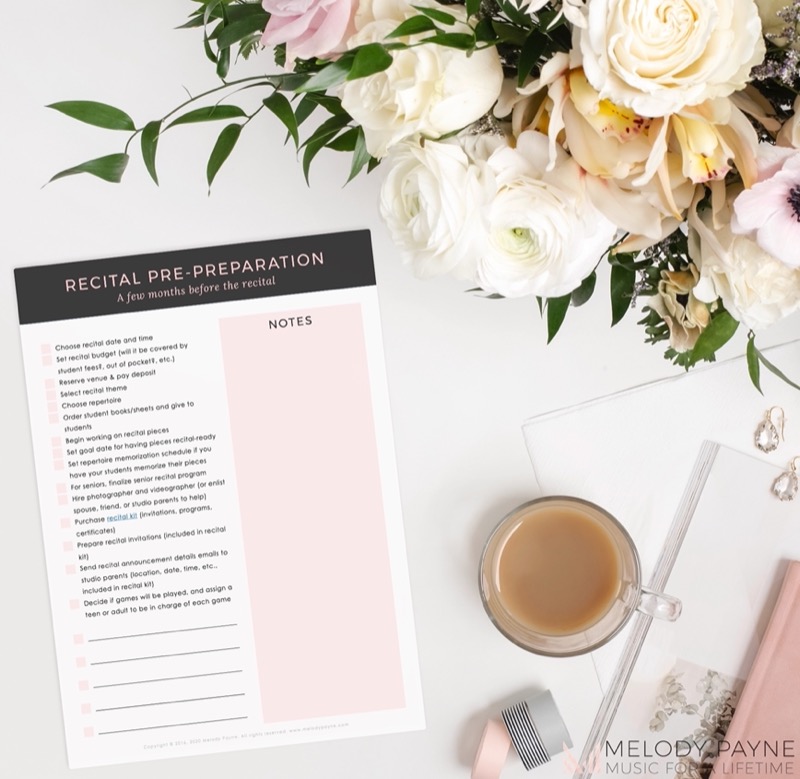5 Reasons to Use Junior Superstar Scales with Young Beginners
This post may contain affiliate links. If you purchase something through an affiliate link, I will receive a small commission at no cost to you. For more information, read the disclosure statement here.
Young beginners can feel excited yet tentative when starting piano lessons. It is important to capitalize on that early enthusiasm and help students to progress quickly. Gaining easy wins early on helps students to feel motivated for new challenges. It can be overwhelming as children encounter new symbols, vocabulary, keyboard geography, in addition to learning to develop kinesthetic awareness. That’s where Junior Superstar Scales comes in.
Junior Superstar Scales is a tool that allows students to work on a variety of skills in the comfort of the patterns of pentascales and arpeggios. This is preferable to plowing through the lesson book, expected to digest new concepts when older concepts have yet to sink in.
Separating note reading skills and fluid playing skills can be helpful if working on both skills simultaneously is resulting in stagnation. In this post I will be sharing why Junior Superstar Scales is valuable for young beginners as well as tips on how to use this wonderful resource.
1. Junior Superstar Scales Provides a Framework for Introducing Technique at Your Own Pace
It is possible for young students to get stuck at a certain point in their first lesson book because they are having trouble mastering Middle C Position. Junior Superstar Scales is a helpful supplemental tool for when a student is experiencing stagnation early on in their studies.
For example, a student may have difficulty relating both finger numbers and letter names to a location on the piano. It can be helpful to set aside lesson book songs and isolate skills needed to make a breakthrough.
Students will be able to master keyboard geography, interval recognition, and will be able to play fluidly through learning pentascales.
You can use your own discretion as to which pentascales you want to teach. What key signatures will they be learning in their pieces in the next year or two? I start with: C, G, D, A, E, B, F, Bb, then a, d, g, c, f, and decide if I want to add any more, or set it aside until later.
2. Terrific to Use as a Reading Exercise or a Rote Exercise
Through using Junior Superstar Scales, students will naturally get familiar with reading the notes within the pentascale they are learning. Yet because it is all pattern-based, they can also be taught by rote.
This resource includes a keyboard infographic with finger numbers. It also has a designated spot to write in the letter names of each scale.
When I introduce a new pentascale/arpeggio, I like to demonstrate each pattern at a moderate tempo. Starting out we want to make sure students are mastering basic technique. This includes non-legato touch, playing with firm fingertips, and hands-together coordination.
Since the patterns are easy to memorize, it allows students to look at their hands and focus on the technique.
3. Junior Superstar Scales Helps Beginners Master Keyboard Geography
With each scale, this is the perfect opportunity to make sure that nothing has slipped through the cracks. “What is our starting note? Where is that note? Can you use your pointer finger, play/say all the note names going up, starting with X?”
I ask questions rather than telling. Once the hand position is set up, I have the student place their hands back on their lap. Then I have the student set up the hand position without my help. Playing Junior Superstar Scales in different octaves will help students think beyond hand positions.
4. Junior Superstar Scales Helps Young Beginners Master Intervals
I will call out a letter name within the pentascale position and ask the student to play a step/skip up/down. Once the student is adept at this exercise hands separately, you can also have them try it hands together.
When you have just a minute or two left in the lesson, play an interval game. “What note is a 3rd up from A?” This can later be adapted to: “Play the note a major/minor third up/down from A.”
5. Teaches Different Touches with Pentascales
It is often difficult for students to practice crescendos and decrescendos within a new (and difficult) piece. It is beneficial for students to work on these skills while they are learning pentascales. This is the perfect opportunity to teach students to crescendo correctly, using arm weight rather than pressing on the keys with tension.
In addition to dynamics, the pentascales should be practiced in a variety of touches, starting with non-legato. Young students can learn to play legato by starting out with 2-note slurs, followed by 3-4 note slurs when they are ready. Once they are comfortable with legato, students can then learn staccato hands separately, then together.
This is a flexible resource which can be adapted to accommodate young students with small hands. If a student does not have the strength to play a 3-note chord yet, they can start with just the fifths. Eventually the student will be able to play the fifth, then add and hold the third.
What Do Students Do Next?
After your beginners finish Junior Superstar Scales, they are ready to move on to other technique books. The Superstar Scales piano technique book includes octave scales, octave arpeggios, and I-IV-I-V7-I chord progressions for students who are ready to take the next big step!
If your beginners are very young and aren’t yet reading notes on the staff, First Steps to Superstar Scales would be the perfect resource for them.
Grab Junior Superstar Scales today and see how quickly your beginners improve!
Other blog posts you may like
- Teaching Scales, Chords, And Arpeggios Using The Superstar Scales Piano Technique Book
- Introducing the Circle of Fifths to Your Students
- Teaching Beginning Piano Technique To Young Piano Students
- Save Time With Over 200 Print-and-Go Music Theory Worksheets!
Don't miss out!
Follow us on Facebook and Instagram, join our Facebook group for piano teachers, and subscribe to the newsletter to get helpful teaching tips, resources, and tutorials delivered straight to your inbox every week.
Michelle
Michelle
Welcome!
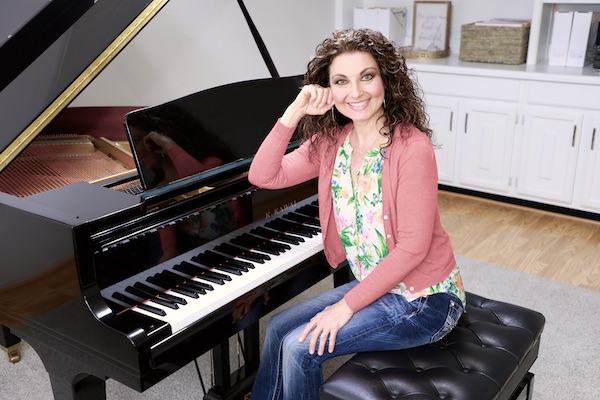
Hi! I’m Melody Payne, a pianist and piano teacher, educational resource author, a fun-loving wife to the most wonderful and talented hubby I could ask for, and a lifelong learner who loves to share. I want to make your life as a music teacher easier by writing and sharing helpful and relevant music teaching articles, and by creating educational resources with your very own students in mind. If you are a parent who wants to enroll your child in piano lessons, I’d love for us to get started building those skills that can give your child a lifetime of musical enjoyment!

